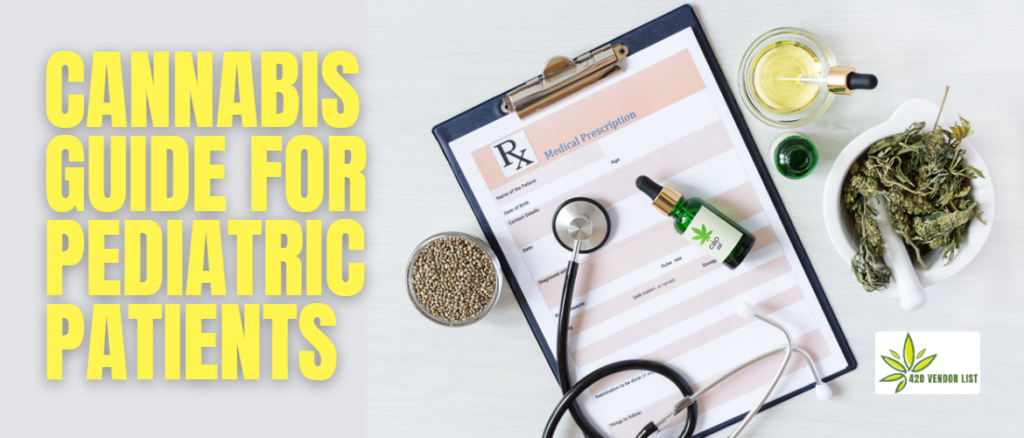
Cannabis has been used to treat illnesses for a long time. In fact, humans have utilized cannabis’s therapeutic effects for hundreds of years. However, when it comes to using cannabis for pediatric to heal youngsters, outdated preconceptions and unfamiliarity may make parents wary of medical marijuana as a treatment option. As a result, when it comes to how cannabis works therapeutically, a deeper understanding is required.
The cannabis plant’s pharmacologically active components interact with the endocannabinoid system (ECS) in the brain and body. The ECS is a regulating system for chemical communications between our cells that consists of a complicated network of medicinal chemicals. The human body generates endocannabinoids, which are “cannabis-like” chemicals that act like the cannabinoids found in cannabis. Endocannabinoids maintain the cell’s homeostasis or balance. When there is a deficit in these chemicals, the disease may develop. We only discovered the ECS in 1988, but recent study has revealed how crucial it is in illnesses that were previously unknown or inadequately treated.
Dysfunction within the ECS has been discovered in children with epilepsy, autism, and other psychiatric diseases. When the brain’s chemical communications are out of balance, this imbalance is conveyed as seizures, aberrant behaviors, and atypical cognitive processes.
During adolescence, the developing brain is particularly susceptible to influence. Physically healthy teenagers who take frequent doses of THC on a regular basis are at risk of having their brains matured. The study discovered that these otherwise healthy adolescents were at risk for worsened executive function, impulsiveness, memory problems, attention difficulties, decision-making difficulties, and overall lower intelligence quotient (IQ) and verbal IQ. Minors who are otherwise medically well should avoid THC and cannabis since the endocannabinoid system requires time to develop fully in order for it to properly progress and aid in the development of a healthy, mature adult brain.
What if a youngster is not physically well?
To further investigate the long-term consequences of cannabis use in children who are not fully healthy, more study is required. CBD, which stands for cannabidiol, is a chemical that is non-intoxicating and has significant therapeutic value thanks to its anticonvulsant, antioxidant, anti-anxiety, antipsychotic, anti-inflammatory, and antitumoral effects. There is still a trace of THC in these strains, but the overall experience is dominated by CBD’s effects. It’s vital to remember that, despite the fact that CBD has not been studied extensively in humans, no negative effects have been reported following its usage among youngsters. In fact, doctors have discovered that kids with a highly poor prognosis of uncontrolled seizures, developmental delay and cognitive impairment are now progressing rather than regressing as a result of CBD therapy. Many people are able to stop taking pharmaceutical drugs that haven’t worked and frequently have undesirable or hazardous side effects.
Cannabis for pediatric patient
Cannabis medicines are commonly used by parents to assist their children with symptom alleviation from the chemotherapy and radiation side effects. Parents may be desperate for a cure when they learn that cancer therapy is ineffective.
Cannabinoids have been found in research to slow tumor growth, lead to cancer cell suicide (apoptosis), prevent metastasis and stop the formation of new blood vessels in tumors.
Cannabinoids have also been found to enhance the effectiveness of chemotherapy medicines. There have only been two human clinical trials on people with recurrent glioblastoma multiforme, a deadly brain tumor. Both the Australian and US studies revealed that cannabis oil with both THC and CBD had advantages. Cannabis for pediatric , it is becoming increasingly recognized as a safe choice for these severely ill youngsters, with many individuals reporting enhanced quality of life.
Marijuana and Epilepsy
The suffering caused by epilepsy and the detrimental influence on a person’s quality of life have inspired a parent-led movement pushing for the use of marijuana for seizures, particularly CBD-rich cannabis. The ECS’s role in maintaining homeostasis, which is crucial for survival, has also piqued researchers’ attention. Researchers have devoted considerable effort to investigating the potential of marijuana and epilepsy and how the ECS may be a target for therapy. There is scientific evidence suggesting that people with epilepsy may have an endocannabinoid deficiency. Epilepsy is also linked to a number of other diseases and ailments, including: AGEs (Arthritis, Glaucoma, and Eye Damage), which are caused by chronic inflammation. According to research published in the journal Neurotherapeutics earlier this year, CBD has been shown to reduce pain sensation while simultaneously increasing sensitivity among those.

